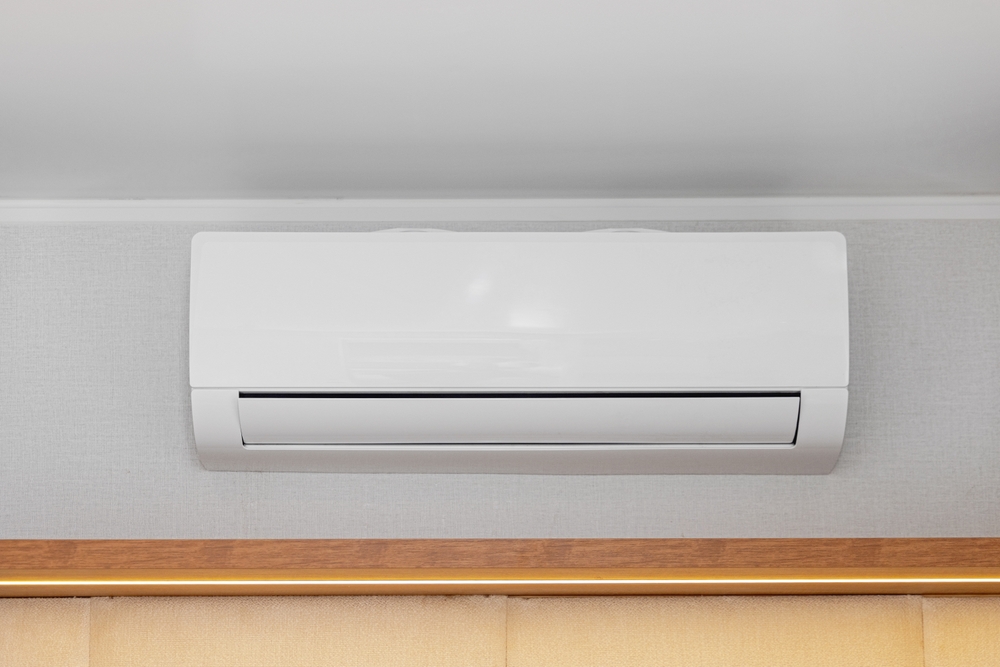
Central AC vs. Ductless Mini-Splits: Which is Right for Your Home in Woodbine, KS?
July 31, 2025 5:53 pm Leave your thoughtsChoosing between a central air conditioning system and a ductless mini-split system can feel like an overwhelming decision, especially for homeowners in Woodbine, KS, where the summers can be hot and humid while winters can dip to brisk temperatures. Each cooling solution has unique benefits, trade-offs, and installation considerations. By exploring the nuances of central air vs mini split systems, you can make a well-informed choice that fits your lifestyle, budget, and home’s design. Let’s dive deep into this comparison to help you determine whether ductless vs central air is the right fit for your Kansas home.
Central Air Conditioning Systems
Central air conditioning systems have long been the standard for whole-home cooling. These systems rely on a network of ducts to distribute cooled air throughout the house from a central unit. The most common setup features an outdoor condenser unit connected to an indoor air handler via refrigerant lines, with a blower pushing conditioned air through ductwork hidden behind your walls and ceilings.
One significant advantage of central AC is its ability to cool an entire home evenly. For many homeowners, the appeal of “set it and forget it” is hard to beat. With a single thermostat controlling the temperature for the whole house, central air makes it simple to maintain comfort, especially in larger homes. Central AC systems also tend to have higher resale value because buyers expect traditional ducted systems in many Kansas homes.
However, installing or upgrading a central air system can be expensive if your home lacks existing ductwork. Retrofitting ducts into an older home may require cutting into walls, rearranging plumbing or electrical, and creating space for large vents, all of which increase costs. Furthermore, poorly maintained ductwork can accumulate dust, allergens, or even mold, which is especially concerning for those with respiratory issues.
For Woodbine homeowners with existing ducts in good condition, central air is often the most straightforward and cost-effective option. But if your home is historic, lacks ducts, or has limited attic or basement space, you might find a ductless option more practical.
Exploring Ductless Mini-Split Systems
Ductless mini-splits, as the name suggests, avoid the use of ductwork altogether. These systems consist of an outdoor compressor unit connected directly to one or more indoor air-handling units, usually mounted high on the wall. Each indoor unit has its own thermostat, providing targeted heating or cooling for a specific room or “zone.”
One of the most attractive benefits of a mini-split system is its installation flexibility. In Woodbine, where many homes have unique layouts or were built before modern HVAC systems became standard, mini-splits provide an energy-efficient way to add cooling and heating without tearing into walls to install ducts. You only need a small hole to run the refrigerant lines, drastically reducing installation labor compared to traditional ducted systems.
Mini-splits are also well known for their energy efficiency. Because they deliver air directly into a room, they avoid the energy losses associated with ducts, which can account for 20-30% of total energy waste in central AC systems. Many homeowners also love the zoning capability — you can cool or heat only the rooms you actually use, which is ideal for households with varying comfort needs or spare guest rooms that don’t need daily climate control.
Of course, mini-splits aren’t without drawbacks. The initial equipment cost per unit can be higher than a comparable central air handler, especially if you want to cover the entire home with multiple indoor units. Some homeowners also dislike the look of a wall-mounted unit in their living spaces, preferring the hidden design of central air vents.
Still, for Woodbine homes without ducts or for add-ons like garages, workshops, or sunrooms, a mini-split system is often the best choice.
Energy Efficiency and Performance Comparison
Energy efficiency should be a top consideration when choosing between central air vs mini split systems, especially given rising energy costs in Kansas. Central air conditioners have become far more efficient over the past two decades thanks to stricter federal standards. High-efficiency central AC units can achieve SEER (Seasonal Energy Efficiency Ratio) ratings above 16 or even 20, depending on the model, and paired with a smart thermostat, they can deliver consistent, reliable comfort.
Ductless mini-splits, however, typically offer even higher efficiency ratings, with many systems exceeding SEER ratings of 20. Because they avoid duct losses entirely and allow you to condition rooms individually, they can dramatically lower your monthly electric bill if used strategically. For example, a family who only uses bedrooms at night can switch off living-room units, saving a significant amount of energy.
Another consideration is how well each system handles heating. Many ductless mini-splits are heat pumps, which provide both cooling and heating, even in temperatures down to -5°F with modern inverter technology. That means they can supplement or even replace a furnace in mild Kansas winters. Central air conditioners, on the other hand, require a separate heating system, usually a gas furnace, which might mean higher installation and maintenance costs if you need to replace both at once.
Cost Considerations and Installation Factors
When evaluating ductless vs central air, installation costs are a critical factor. For homes in Woodbine that already have functioning ductwork, a central air conditioner replacement or upgrade will usually be cheaper than a whole-home ductless mini-split system. You’re only paying for the new AC unit, labor, and possibly some duct sealing or repairs.
However, if your home does not have ducts, installing central air can easily balloon to tens of thousands of dollars because of the construction needed to run ductwork. In these cases, a ductless mini-split becomes the more budget-friendly option despite its higher per-unit equipment cost.
Beyond the installation, you should also consider long-term maintenance costs. Central air requires annual duct inspections, cleaning, and periodic sealing to maintain energy efficiency. Ductless systems need occasional filter cleaning and checks on the refrigerant lines, which is generally simpler and cheaper than duct inspections.
For smaller homes or those with additions like workshops or guesthouses, many Woodbine residents choose a hybrid approach: central AC for the main living areas and a ductless mini-split for additions that are difficult to connect to the existing system. This combination often provides the best balance between comfort, cost, and efficiency.
Making the Right Choice for Your Woodbine Home
So which system is right for you? The answer depends on your home’s existing infrastructure, your budget, and your family’s comfort needs. If your house already has good-quality ductwork and you prefer a traditional, concealed cooling system, then central air is likely the easiest and most cost-effective option. Its ability to cool the entire house evenly with one thermostat, plus its potential to boost resale value, makes it attractive to many Woodbine homeowners.
On the other hand, if your home lacks ductwork or you want to avoid major construction, a ductless mini-split offers unmatched flexibility and efficiency. With the ability to independently control temperatures in each zone, it is an excellent choice for families with different comfort preferences or for older homes where duct installation would be too invasive or costly.
Both systems have advanced significantly in recent years, with options for smart controls, inverter-driven compressors, and energy-saving features. Whether you choose a ductless vs central air system, you’ll find that modern technology has made both quieter, more efficient, and more effective than ever before.
Conclusion
If you live in Woodbine, KS, and want personalized advice on which system is best, it is worth talking to a local HVAC professional. They can perform a load calculation, inspect your existing systems, and help you weigh the upfront installation costs against long-term energy savings. Investing the time to plan carefully will ensure your home stays comfortable in the summer heat and cozy during those brisk Kansas winters — no matter which system you choose.
Ultimately, whether you go with central air vs mini split, the goal is the same: reliable, efficient, and affordable comfort for your home. With the right research, consultation, and planning, you can make a confident decision that pays off for years to come.
Need HVAC Services in Woodbine, KS?
Family- and locally owned and operated since 1996, we have built a reputation for delivering excellent workmanship, dependability, and professionalism to the residents and commercial businesses in the Woodbine and surrounding areas. Our team of highly skilled and knowledgeable technicians specializes in air conditioning and heating system installation, repair, and replacement; boiler and furnace maintenance; and mini-split and general HVAC system care. All of our technicians are fully licensed, bonded, and insured. Contact us today to learn more about what we can do for you!
Categorised in: Air Conditioning Tips
This post was written by admin
